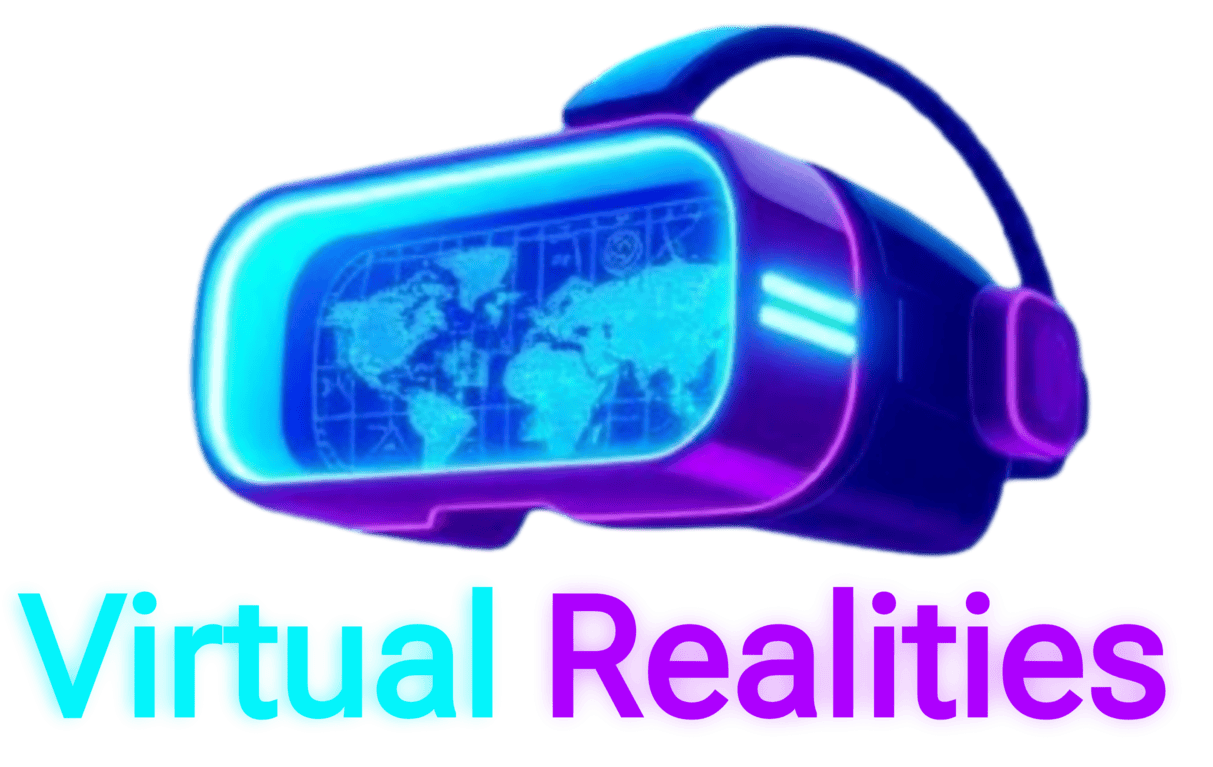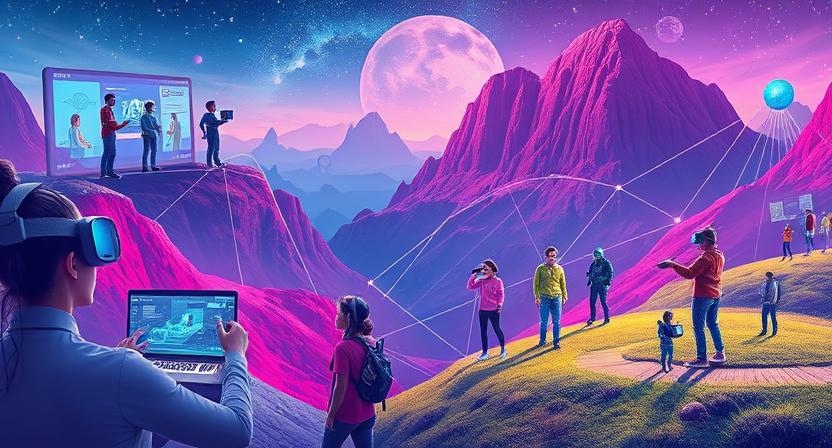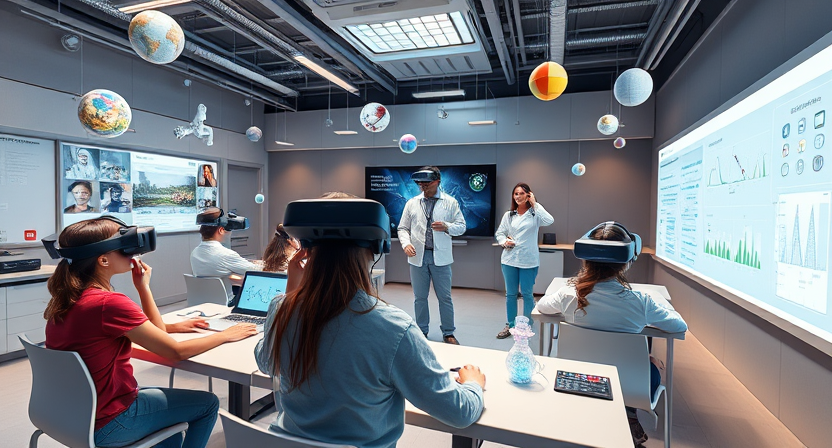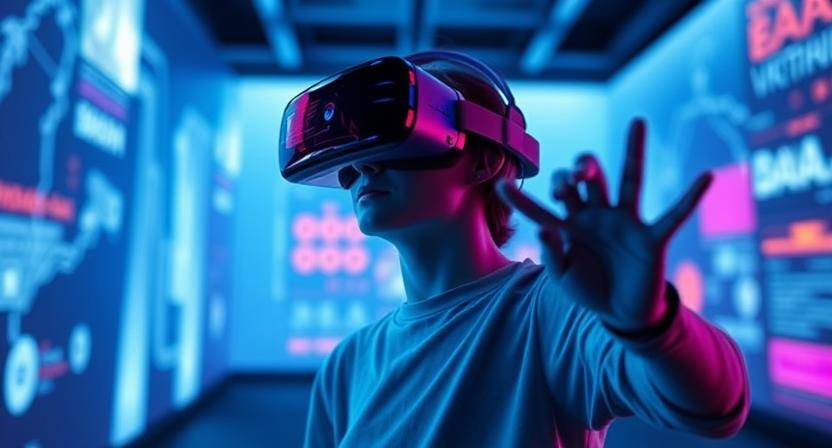Virtual Reality in Education

Immersive experiences provided by virtual reality (VR) technology open up new avenues in the field of education. By allowing students to explore historical sites, traverse the solar system, or conduct virtual science experiments, VR enhances learning by making it interactive and engaging. This innovative approach sparks curiosity and encourages active participation, ultimately promoting a deeper understanding of complex concepts.
Moreover, VR in education facilitates personalized learning experiences tailored to individual student needs. Through customizable simulations and scenarios, educators can cater to different learning styles and adjust the difficulty level to challenge students appropriately. This adaptive nature of VR not only fosters a more inclusive learning environment but also empowers students to take ownership of their educational journey.
Enhanced Immersive Experiences
Virtual reality technology has revolutionized the way users interact with digital content by providing immersive experiences that bridge the gap between the physical and virtual worlds. Through the use of VR headsets and controllers, individuals can transport themselves to realistic simulations and environments, allowing for a heightened sense of presence and engagement. These enhanced immersive experiences have opened up new possibilities for education, training, entertainment, and various other industries looking to leverage the power of virtual environments to engage their audiences in novel ways.
The level of immersion offered by virtual reality not only captivates users through visually stunning graphics and 3D audio but also enables them to actively participate in the digital space through realistic interactions. By integrating haptic feedback and motion tracking technologies, VR experiences can provide a sense of physical presence and embodiment within virtual worlds, enhancing the overall sense of immersion and realism. With the continuous advancement of VR hardware and software, the potential for creating truly transformative and unforgettable immersive experiences is virtually limitless.
Healthcare Applications of Virtual Reality
Virtual Reality (VR) technology is revolutionizing the healthcare industry by offering innovative solutions for various medical applications. One significant use of VR in healthcare is in pain management, where immersive experiences can help distract patients during procedures or chronic pain treatments. By transporting patients to virtual environments, such as relaxing nature scenes or calming simulations, VR can reduce the perception of pain and anxiety.
Moreover, VR is being utilized in medical training programs to enhance the learning experience for healthcare professionals. By creating realistic simulations of surgical procedures or medical emergencies, VR allows students to practice in a safe and controlled environment. This hands-on training not only improves clinical skills but also increases confidence and preparedness when faced with real-life medical situations.
Virtual Reality in the Workplace
In the workplace, virtual reality is revolutionizing the way employees are trained. Traditional training methods can often be mundane and ineffective, but VR provides a dynamic and engaging platform for learning new skills. By immersing employees in realistic simulations, they can practice and hone their abilities in a safe, controlled environment before applying them in real-life situations. This not only enhances the learning experience but also increases retention rates and improves overall performance.
Moreover, virtual reality is being utilized for remote collaboration in the workplace. With the rise of telecommuting and global teams, VR technology bridges the gap by enabling colleagues to interact and collaborate as if they were in the same physical space. Meetings, brainstorming sessions, and training can all be conducted in virtual environments, fostering better communication, teamwork, and productivity among employees regardless of their physical locations.
Advancements in VR Hardware
Recent advancements in virtual reality (VR) hardware have significantly enhanced the overall immersive experience for users. Innovations in display technology, such as higher resolution screens and faster refresh rates, have resulted in sharper visuals and reduced motion sickness in VR applications. Additionally, improvements in tracking technology, like inside-out tracking and eye-tracking, have increased the accuracy of movements and interactions within virtual environments.
Another important development in VR hardware is the introduction of more ergonomic and comfortable headsets. Manufacturers have focused on creating lighter, better-balanced devices with enhanced ventilation systems to address issues of discomfort during prolonged use. These advancements not only improve the user experience but also make VR more accessible to a wider range of individuals, including those who may have previously been deterred by bulky and heavy equipment.
The Rise of Social VR Platforms

Social VR platforms have revolutionized the way people interact and connect in virtual spaces. Users can create customized avatars, engage in real-time communication, and participate in various activities with others from around the globe. These platforms offer a unique sense of presence and collaboration, making virtual interactions more engaging and immersive.
As the technology advances, social VR platforms are continually evolving to enhance user experiences and foster a sense of community. Through virtual gatherings, events, and shared experiences, users can build relationships and explore virtual worlds together. The rise of social VR platforms signifies a shift towards more interactive and engaging forms of social interaction in the digital age.
Virtual Reality in Travel and Tourism
The incorporation of virtual reality technology in the travel and tourism sector has revolutionized the way people experience destinations from the comfort of their homes. Through immersive 3D simulations and realistic environments, individuals can explore famous landmarks, go on virtual tours, and even participate in interactive cultural experiences without physically being present at the location. This not only allows for a preview of potential travel destinations but also serves as a valuable tool for travel planning and decision-making.
Moreover, virtual reality in travel and tourism offers a new level of accessibility for individuals with mobility restrictions or financial constraints, providing them with the opportunity to virtually visit destinations that may have been previously inaccessible. By enabling users to have a 360-degree view of destinations and engage with local customs and traditions, virtual reality enhances the overall travel experience and fosters a sense of connection and understanding between people of different cultures. This innovative technology opens up a world of possibilities for both travelers and tourism operators, creating a more inclusive and immersive travel experience for all.
Virtual Reality in Entertainment Industry
The entertainment industry has been quick to embrace virtual reality (VR) technology, offering audiences immersive experiences like never before. From interactive virtual concerts and live theater broadcasts to VR gaming and 360-degree movie experiences, the possibilities seem endless. VR allows users to step into the worlds of their favorite films, games, and shows, blurring the lines between reality and fantasy.
One of the most exciting aspects of VR in the entertainment industry is the potential for creating personalized and customizable content. With VR headsets, users can tailor their experiences based on their preferences, whether it’s choosing different story arcs in interactive narratives or selecting their own vantage points in live events. This level of interactivity and control offers a new dimension to entertainment, engaging audiences in ways that were previously unimaginable.
Ethical Considerations in Virtual Reality Development
Ethical considerations in virtual reality development are becoming increasingly important as this technology continues to evolve and permeate various aspects of society. One key concern revolves around the issue of data privacy and security in virtual environments. Users must trust that their personal information is being handled responsibly and that their interactions within VR spaces are not being exploited for unethical purposes.
Moreover, there is a growing awareness of the potential psychological impact of virtual reality experiences on users. Developers need to consider the implications of creating highly immersive and realistic scenarios that could elicit strong emotional responses or trigger trauma in vulnerable individuals. Ensuring that appropriate safeguards and support systems are in place to protect the mental well-being of users is essential in the ethical development of virtual reality applications.
Augmented Reality Integration with Virtual Reality
Augmented reality (AR) integration with virtual reality (VR) is a groundbreaking development that merges the physical and digital worlds seamlessly. By combining the real-time environment with computer-generated sensory inputs, users experience a heightened level of immersion and interaction. This integration opens up a myriad of possibilities across various industries, from enhancing training simulations to creating personalized customer experiences.
The fusion of AR and VR technologies offers a versatile platform for businesses to showcase products in a virtual setting overlaid on the real world. This allows for unparalleled visualization and customization opportunities, which can revolutionize traditional marketing strategies. Moreover, the integration of AR elements into VR environments can enhance collaborative efforts by enabling real-time interaction and information sharing among users, paving the way for innovative solutions in remote collaboration and teamwork.
Virtual Reality in Sports Training

Virtual reality (VR) technology has revolutionized the way athletes train and prepare for competitions. By immersing athletes in realistic virtual environments, VR allows them to simulate game scenarios and practice their skills in a safe and controlled setting. This can help athletes improve their decision-making, reaction times, and overall performance on the field or court.
Moreover, VR sports training programs can be customized to meet the specific needs and goals of individual athletes. Whether it’s honing a golf swing, perfecting a tennis serve, or enhancing football tactics, VR technology offers a versatile and tailored approach to skill development. Athletes can also benefit from immediate feedback and performance analysis provided by VR systems, enabling them to identify areas for improvement and track their progress over time.
Accessibility Features in Virtual Reality
Virtual reality has the potential to revolutionize the way we engage with digital content, but it’s essential that accessibility remains a top priority in its development. People with disabilities should be able to fully participate in virtual reality experiences without encountering unnecessary barriers. Incorporating features such as voice command controls, adjustable font sizes, color contrast options, and customizable layouts can make VR content more inclusive for a diverse range of users. By prioritizing accessibility features, developers can ensure that virtual reality technology is truly accessible to all individuals, regardless of their physical or cognitive abilities.
Furthermore, implementing assistive technologies like screen readers and gesture-based controls can significantly enhance the user experience for individuals with disabilities. By providing multiple options for interaction within virtual environments, developers can cater to a broader audience and create more inclusive experiences. Fostering accessibility in virtual reality not only benefits users with disabilities but also promotes a more inclusive and diverse digital landscape overall. It’s crucial for developers to consider accessibility features from the initial stages of VR content creation to ensure that everyone can engage with and enjoy the immersive world of virtual reality.
Virtual Reality for Mental Health Treatment
Virtual reality (VR) has emerged as a promising tool in the field of mental health treatment. By creating immersive and interactive environments, VR can be used to simulate scenarios that help individuals confront and manage their anxieties, phobias, and PTSD symptoms in a controlled setting. Therapists can tailor these virtual experiences to suit each patient’s needs, providing a personalized and effective form of exposure therapy.
Moreover, VR therapy can also be used to treat conditions such as depression and stress by offering relaxation exercises, mindfulness activities, and guided visualization in a virtual environment. By leveraging the power of VR technology, mental health professionals can engage patients in therapeutic activities that enhance their emotional well-being and offer a novel approach to traditional talk therapy.
Virtual Reality in Architecture and Design
Virtual Reality plays a pivotal role in revolutionizing the way architects and designers conceptualize and present their projects. By immersing clients and stakeholders in virtual environments, architects can provide a more tangible understanding of spatial layouts, materials, and lighting conditions. This immersive experience allows for better communication and collaboration among all parties involved in the design process.
Moreover, Virtual Reality enables architects and designers to make real-time modifications and see immediate results, enhancing the efficiency of the design iteration process. By enabling users to walk through virtual spaces and experience them from different perspectives, Virtual Reality empowers architects to create more innovative and user-centric designs. The technology also facilitates better decision-making by enabling stakeholders to visualize the final outcome before construction begins, ultimately leading to more successful and satisfying architectural and design projects.
Virtual Reality in Marketing and Advertising
Virtual Reality in marketing and advertising brings a new dimension to the way brands engage with their audiences. By immersing consumers in interactive and personalized experiences, VR campaigns have the power to captivate attention and create lasting brand impressions. This technology allows companies to showcase products and services in innovative ways, making the marketing message more memorable and impactful.
Incorporating VR into marketing strategies opens up possibilities for storytelling like never before. Brands can transport consumers to virtual environments that evoke emotions and drive purchasing decisions. The ability to create immersive experiences that resonate with customers on a visceral level helps businesses stand out in a crowded marketplace and build stronger connections with their target audience.
Virtual Reality in Remote Collaboration

Remote collaboration has become an indispensable part of the modern workforce, especially with the shift towards more flexible work arrangements. Virtual reality (VR) offers a promising solution to enhance remote collaboration by providing a more immersive and interactive experience for users. By creating virtual spaces where team members can meet, communicate, and collaborate in real-time, VR technology has the potential to bridge the gap between remote colleagues and create a sense of presence that is often lacking in traditional video conferencing.
One of the key advantages of using VR for remote collaboration is its ability to create a sense of shared presence among team members, regardless of their physical location. Through the use of avatars and spatial audio, VR can simulate a sense of being together in the same room, fostering a more natural and engaging communication experience. This shared presence can help to improve team dynamics, enhance creativity, and increase overall productivity in remote collaboration settings.
Virtual Reality in Retail
In the world of retail, virtual reality (VR) is revolutionizing the way consumers interact with products and services. By enabling customers to virtually experience items before making a purchase, VR technology enhances the shopping experience by providing a more immersive and engaging way to browse and shop. This advanced technology allows customers to visualize products in a virtual environment, giving them a clearer idea of how the items will look or function in real life.
Moreover, virtual reality in retail is not only beneficial for consumers but also for businesses. Retailers can utilize VR technology to create virtual showrooms, which can significantly reduce the need for physical retail space and inventory costs. This innovative approach to retail also allows businesses to showcase their entire product range in a virtual space, providing customers with a comprehensive view of available items without the limitations of physical store displays.
Virtual Reality for Environmental Awareness
Virtual Reality has emerged as a powerful tool for raising awareness about environmental issues. By immersing users in realistic virtual environments, VR technology can effectively convey the urgency of environmental conservation efforts. Through interactive experiences, individuals can witness the impact of deforestation, ocean pollution, and climate change firsthand, prompting a deeper emotional connection to the cause.
These virtual simulations enable users to explore different ecosystems and the consequences of human activities on the environment. By providing a 360-degree view of deforested lands, polluted oceans, and endangered wildlife habitats, VR experiences can inspire action and encourage sustainable behaviors. As a result, Virtual Reality has the potential to drive positive change and foster a greater sense of environmental responsibility among individuals and communities alike.
The Future of Virtual Reality Content Creation
As virtual reality (VR) continues to evolve and integrate into various industries, the future of VR content creation holds promising prospects. Content creators are constantly pushing boundaries to deliver immersive experiences that captivate audiences. The advancements in VR technology are enabling creators to develop more realistic and interactive content that transports users to new worlds and experiences.
As the demand for VR content grows, creators are exploring innovative techniques to enhance storytelling and user engagement. The future of VR content creation will likely see a focus on personalized and interactive experiences that cater to individual preferences and interests. With the evolution of VR hardware and software, creators can harness new tools and technologies to craft compelling narratives and experiences that redefine the possibilities of immersive storytelling.
Virtual Reality in Military and Defense Applications
Virtual Reality technology is rapidly transforming the landscape of military and defense applications. With VR simulations, soldiers can undergo realistic training scenarios in a safe environment, enhancing their combat readiness and decision-making skills. This immersive technology allows military personnel to experience different combat situations, practice tactical maneuvers, and improve teamwork without the risk of physical harm.
Furthermore, Virtual Reality is being utilized for mission planning and strategy development. Commanders can visualize complex battlefields, simulate potential scenarios, and test out different strategies in a virtual environment before deploying troops in the field. This not only enhances the effectiveness of military operations but also minimizes risks for personnel on the ground. As VR technology continues to advance, its integration into military and defense applications is expected to bring about significant improvements in training, planning, and operational capabilities.




